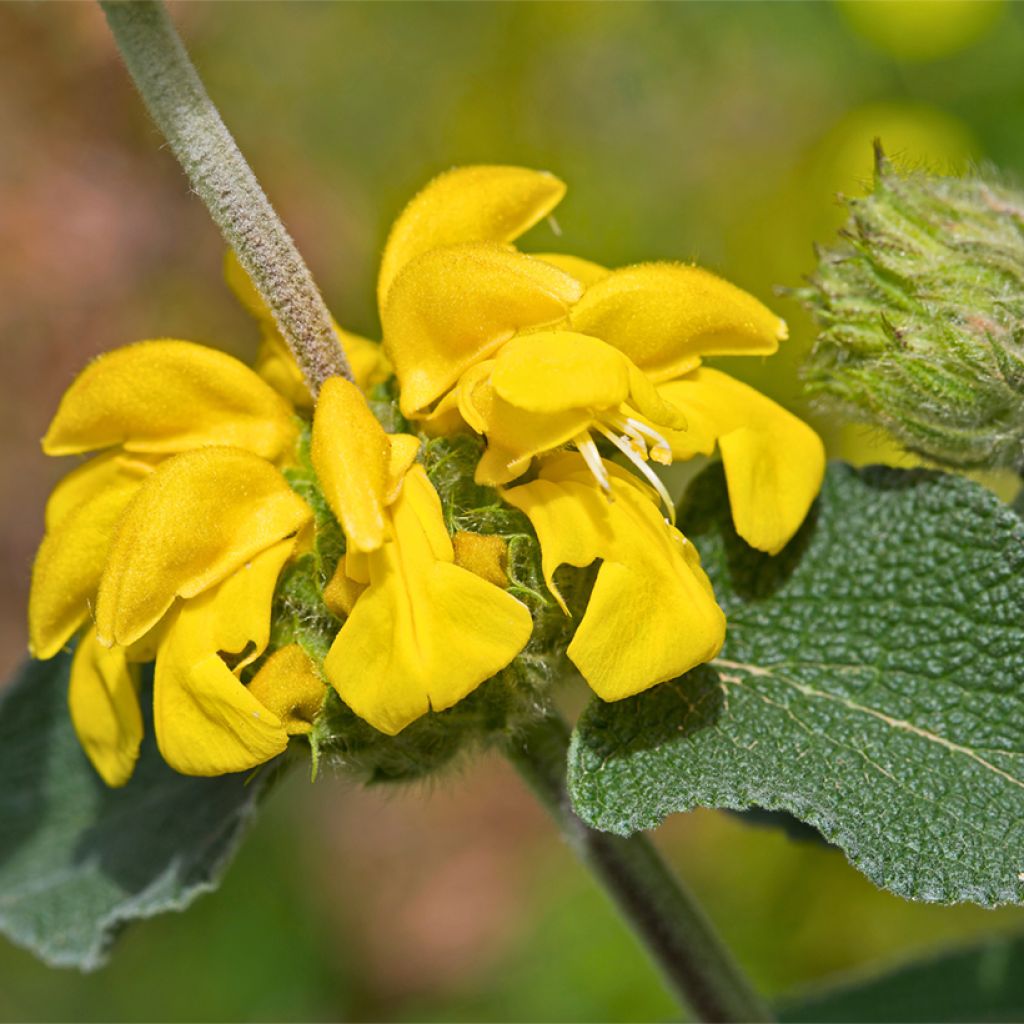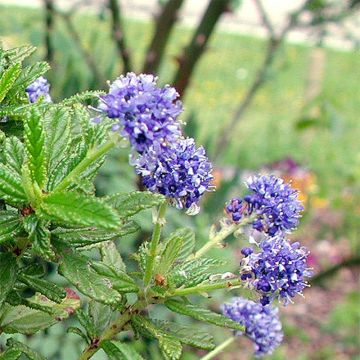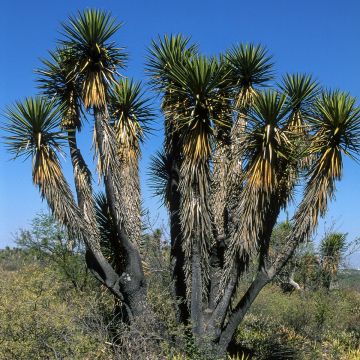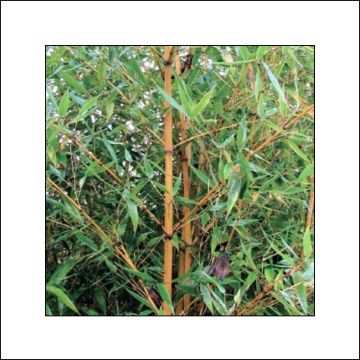

Phlomis bourgaei - Jerusalem Sage


Phlomis bourgaei - Jerusalem Sage
Phlomis bourgaei - Jerusalem Sage
Phlomis bourgaei
Bourgeau sage, Jerusalem Sage
This item cannot be shipped to the selected country
Delivery charge from €5.90
Delivery to Corse prohibited
More information
Schedule delivery date,
and select date in basket
This plant carries a 24 months recovery warranty
More information
We guarantee the quality of our plants for a full growing cycle, and will replace at our expense any plant that fails to recover under normal climatic and planting conditions.
From €5.90 for pickup delivery and €6.90 for home delivery
Express home delivery from €8.90.
Delivery to Corse prohibited: UE law prohibits the import of this plant from mainland France to Corse as part of the fight against Xylella fastidiosa. Please accept our sincere apologies.
More information
Does this plant fit my garden?
Set up your Plantfit profile →
Description
Phlomis bourgaei, also known as Phlomis fruticosa 'Bourgaei', is part of a group of shrubs that thrive in dry terrain called Jerusalem Sage. This variety is one of the most decorative for its summer foliage covered in thick golden wool. It is an evergreen shrub that blooms in spring, with yellow flowers gathered in small crowns. It can withstand sea spray, tolerate limestone, and thrive well in long dry summers. It can be planted in a sunny flower bed or on the edge of woodlands in Mediterranean regions.
Phlomis bourgaei is a plant belonging to the Lamiaceae family, just like thyme and sages. It is native to Turkey and the Aegean Islands. In the wild, it is found in oak scrublands and Aleppo pine woods on rocky limestone soils up to 1000 m altitude. This shrub reaches about 1 m high and 80 cm wide, depending on the growing conditions. It blooms in April-May in the south, a little later in cooler regions. Its curved, 2-3 cm long flowers, are grouped in crowns, regularly arranged on the upper part of the branches. Each flower has a brown "galea" covering a two-lipped, dark yellow corolla. They are visited by pollinating insects, especially large black bees. The foliage shows marked seasonal differences. In winter and spring, it consists of larger, green-grey leaves. They fall in late spring, after flowering, and are replaced by smaller, very wavy leaves, pressed against each other and covered in golden-brown woolly hairs. The hotter and drier the summer, the thicker this golden fuzz will be. The leaves of this phlomis have a strongly wavy, triangular surface. In northern regions, it is semi-evergreen, while it is perennial in Mediterranean climates. The cold resistance of this species is estimated at -12/-15°C at its peak for a mature plant planted in well-drained soil.
Bourgeau's Jerusalem Sage is an excellent plant for dry gardens without irrigation or coastal gardens. This shrub thrives in sandy soils, on scorching limestone plateaus, but also on the edge of oak and pine woodlands in Mediterranean areas. It naturally pairs well with Corbières rockrose (Cistus corbariensis), silver santolina (Santolina chamaecyparissus), and prostrate rosemary ('Pointe du Raz' Rosmarinus officinalis). It will also thrive in a flower bed or sunny border with 'Blue Wonder' spurge (Euphorbia characias) or blue shrubby sages (Salvia). It can even be planted alone in large masses, as its foliage remains decorative all year round.
Report an error about the product description
Plant habit
Flowering
Foliage
Botanical data
Phlomis
bourgaei
Lamiaceae
Bourgeau sage, Jerusalem Sage
Phlomis bourgaei, Phlomis fruticosa 'Bourgaei'
Middle East
Other Phlomis - Bushy Jerusalem Sage
Planting and care
Phlomis bourgaei likes the sun but it tolerates partial shade very well in Mediterranean regions. This species tolerates root competition well on the edge of the undergrowth. Plant it in a very well-drained, rather poor, even stony, sandy and limestone soil. It is perfectly adapted to drought. In autumn, prune the phlomis by half to rejuvenate its branches and maintain a compact and regular clump. It is best to prune in rainy weather to avoid the small irritating hairs from detaching from the foliage. If the branches are destroyed by cold, cut them back in late winter. Phlomis can be attacked by leafhoppers.
Planting period
Intended location
Care
This item has not been reviewed yet - be the first to leave a review about it.
Evergreen shrubs
Haven't found what you were looking for?
Hardiness is the lowest winter temperature a plant can endure without suffering serious damage or even dying. However, hardiness is affected by location (a sheltered area, such as a patio), protection (winter cover) and soil type (hardiness is improved by well-drained soil).

Photo Sharing Terms & Conditions
In order to encourage gardeners to interact and share their experiences, Promesse de fleurs offers various media enabling content to be uploaded onto its Site - in particular via the ‘Photo sharing’ module.
The User agrees to refrain from:
- Posting any content that is illegal, prejudicial, insulting, racist, inciteful to hatred, revisionist, contrary to public decency, that infringes on privacy or on the privacy rights of third parties, in particular the publicity rights of persons and goods, intellectual property rights, or the right to privacy.
- Submitting content on behalf of a third party;
- Impersonate the identity of a third party and/or publish any personal information about a third party;
In general, the User undertakes to refrain from any unethical behaviour.
All Content (in particular text, comments, files, images, photos, videos, creative works, etc.), which may be subject to property or intellectual property rights, image or other private rights, shall remain the property of the User, subject to the limited rights granted by the terms of the licence granted by Promesse de fleurs as stated below. Users are at liberty to publish or not to publish such Content on the Site, notably via the ‘Photo Sharing’ facility, and accept that this Content shall be made public and freely accessible, notably on the Internet.
Users further acknowledge, undertake to have ,and guarantee that they hold all necessary rights and permissions to publish such material on the Site, in particular with regard to the legislation in force pertaining to any privacy, property, intellectual property, image, or contractual rights, or rights of any other nature. By publishing such Content on the Site, Users acknowledge accepting full liability as publishers of the Content within the meaning of the law, and grant Promesse de fleurs, free of charge, an inclusive, worldwide licence for the said Content for the entire duration of its publication, including all reproduction, representation, up/downloading, displaying, performing, transmission, and storage rights.
Users also grant permission for their name to be linked to the Content and accept that this link may not always be made available.
By engaging in posting material, Users consent to their Content becoming automatically accessible on the Internet, in particular on other sites and/or blogs and/or web pages of the Promesse de fleurs site, including in particular social pages and the Promesse de fleurs catalogue.
Users may secure the removal of entrusted content free of charge by issuing a simple request via our contact form.
The flowering period indicated on our website applies to countries and regions located in USDA zone 8 (France, the United Kingdom, Ireland, the Netherlands, etc.)
It will vary according to where you live:
- In zones 9 to 10 (Italy, Spain, Greece, etc.), flowering will occur about 2 to 4 weeks earlier.
- In zones 6 to 7 (Germany, Poland, Slovenia, and lower mountainous regions), flowering will be delayed by 2 to 3 weeks.
- In zone 5 (Central Europe, Scandinavia), blooming will be delayed by 3 to 5 weeks.
In temperate climates, pruning of spring-flowering shrubs (forsythia, spireas, etc.) should be done just after flowering.
Pruning of summer-flowering shrubs (Indian Lilac, Perovskia, etc.) can be done in winter or spring.
In cold regions as well as with frost-sensitive plants, avoid pruning too early when severe frosts may still occur.
The planting period indicated on our website applies to countries and regions located in USDA zone 8 (France, United Kingdom, Ireland, Netherlands).
It will vary according to where you live:
- In Mediterranean zones (Marseille, Madrid, Milan, etc.), autumn and winter are the best planting periods.
- In continental zones (Strasbourg, Munich, Vienna, etc.), delay planting by 2 to 3 weeks in spring and bring it forward by 2 to 4 weeks in autumn.
- In mountainous regions (the Alps, Pyrenees, Carpathians, etc.), it is best to plant in late spring (May-June) or late summer (August-September).
The harvesting period indicated on our website applies to countries and regions in USDA zone 8 (France, England, Ireland, the Netherlands).
In colder areas (Scandinavia, Poland, Austria...) fruit and vegetable harvests are likely to be delayed by 3-4 weeks.
In warmer areas (Italy, Spain, Greece, etc.), harvesting will probably take place earlier, depending on weather conditions.
The sowing periods indicated on our website apply to countries and regions within USDA Zone 8 (France, UK, Ireland, Netherlands).
In colder areas (Scandinavia, Poland, Austria...), delay any outdoor sowing by 3-4 weeks, or sow under glass.
In warmer climes (Italy, Spain, Greece, etc.), bring outdoor sowing forward by a few weeks.
















































